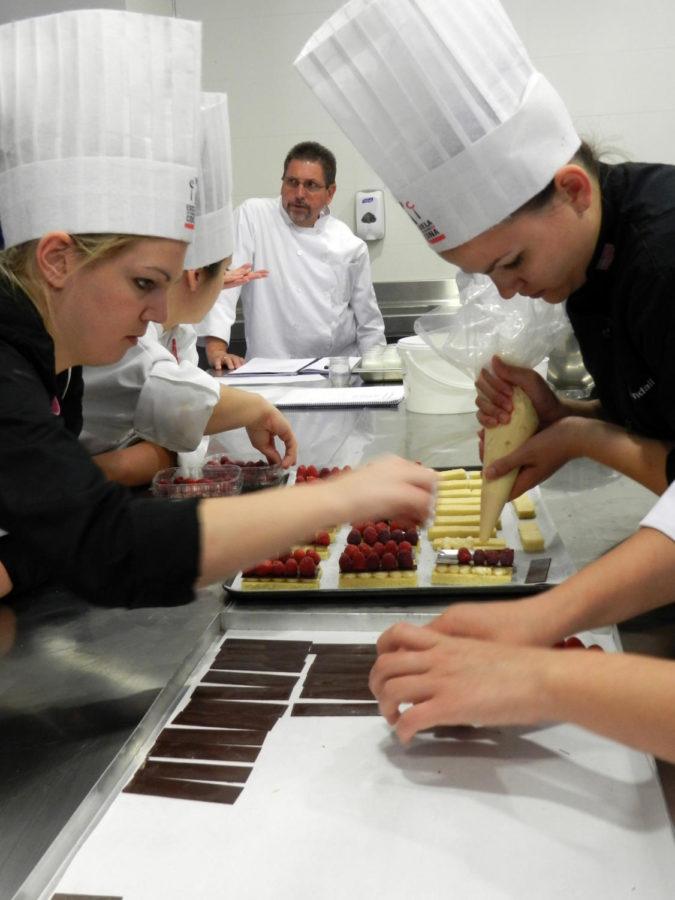ISU students discover tastes of Spain through culinary study abroad program
November 28, 2012
Students with a passion for the culinary arts have an opportunity to study Spanish cuisine in Spain next summer as a part of Spain’s International School of Culinary Arts study abroad program.
Linda Svendson, program director and senior lecturer in food science and nutrition, asked that all interested students begin the necessary preparations to attend the two-week trip to Spain.
“We hope to keep going every year and keep taking students who want to learn about Spanish cuisine,” Svendson said. “I think [Spanish people] think of eating food as more of an event or a social event … than we do.”
Svendson said the food characteristics differ depending on the region of Spain.
“We were in the middle to the North [of Spain]; they’re really influenced by a lot of different cultures because, you know, the Romans were there and then the Moors were there,” Svendson said.
“Seafood is really important,” Svendson said. “They have a lot of seafood even in the middle of the country, not just on the coast.”
Other people thought the cuisine was full of new things to try constantly.
“It was really neat just to learn the new cuisine, not only in the kitchen but when we would go out at night to dinner,” said Valerie Weets, junior in culinary and human sciences. “I ate at least 20 new things I’d never had before.”
Svendson observed a keen interest in wild game among Spanish chefs. Local herbs and spices are important in Spain and freshness is a must, Svendson said.
“Their utilization of animals, they fully utilize the carcass,” said Erica Beirman, lecturer in food science and human nutrition. Beirman served as culinary coordinator for the trip.
The differences in the way the Spanish arrange their meals may be seen as backward to Iowans.
“Here in America, we have huge pieces of meat on the plate and small sides. Their meat may not be the main focus of the dish,” Beirman said. “They eat a lot of small pieces, ‘topas,’ which is actually catching on here in the U.S., and they put a lot more time into each individual topa.”
Students became immersed in the culture throughout their daily activities. Meals were not eaten on an American schedule, Beirman said. Lunch was often as late as 2 to 3 p.m., while dinner was not eaten until 9 to 10 p.m.
Weets said the trip provides a great real life experience in the culinary arts.
“It was good experience as far as learning large-scale dining in kind of a short amount of time. We were in the kitchen for three hours, but then again, we’re making five dishes for 30 people,” Weets said.
Most students who have attended the trip have been culinary arts, hospitality, event management, dietetics or nutrition majors. Other nonmajor students are allowed to go as long as they have completed FSHN 115 and 215 and meet the other requirements.
“You really just have to have knowledge of food prep in order to walk into a kitchen in an international country and work under their chefs,” Beirman said.
Svendson hopes to take 10 students on the next study abroad trip in summer of 2013.
“We got to go on lots of different trips that showed us where our food comes from,” Weets said. “Just getting to see where everything kind of starts is really cool.”
The students toured castles, wineries, a cheese factory and a seafood farm, among their many stops in Spain.
“Anyone that’s interested in food and cooking and wants to learn about a different cuisine other than American cooking should definitely go,” Weets said.
“It’s nice to have a background in cooking so you have a little head start once you get into the kitchen, but I think it’s for anybody that loves food as much as we do.”

















